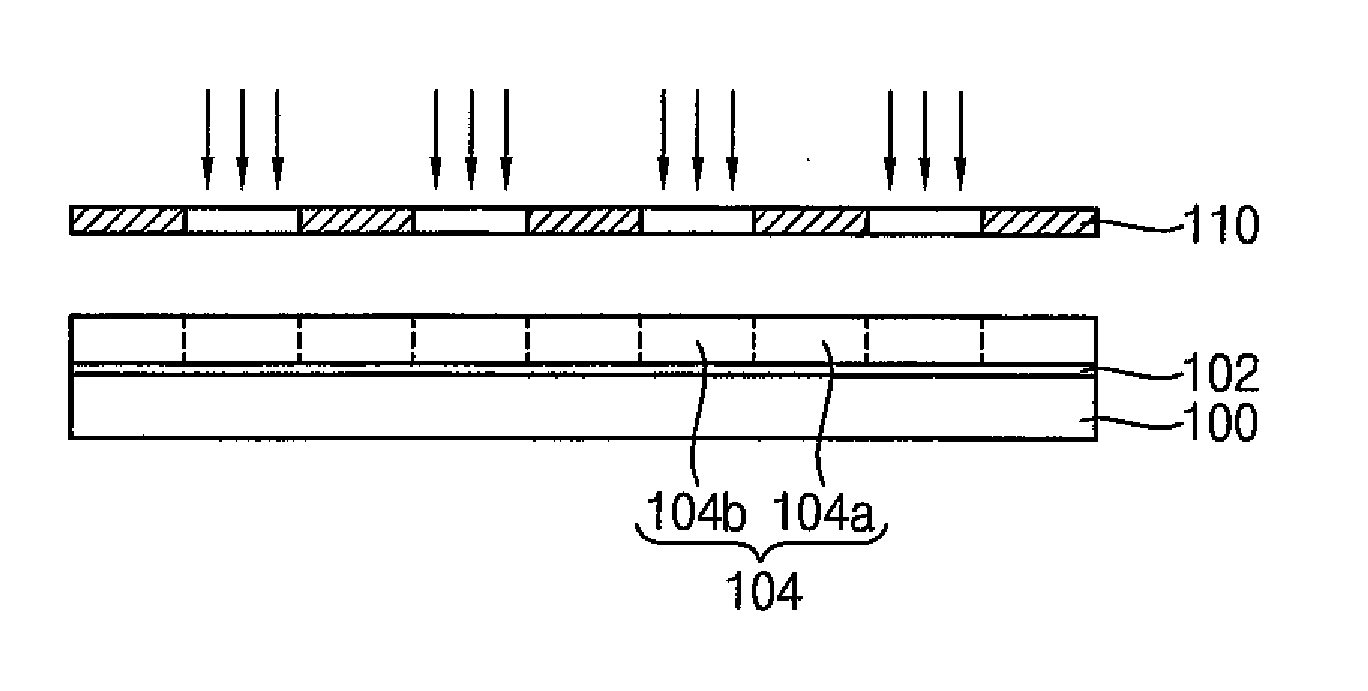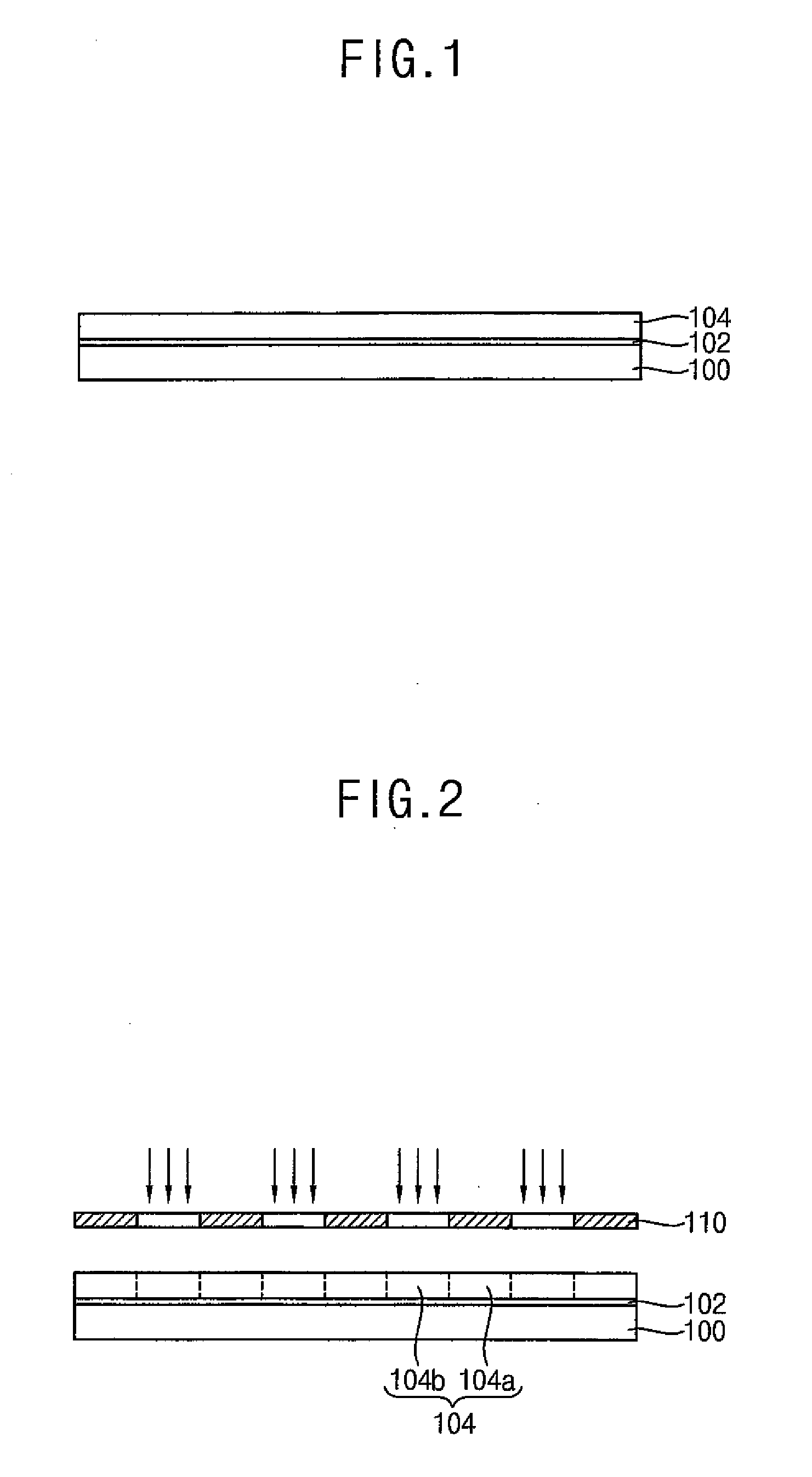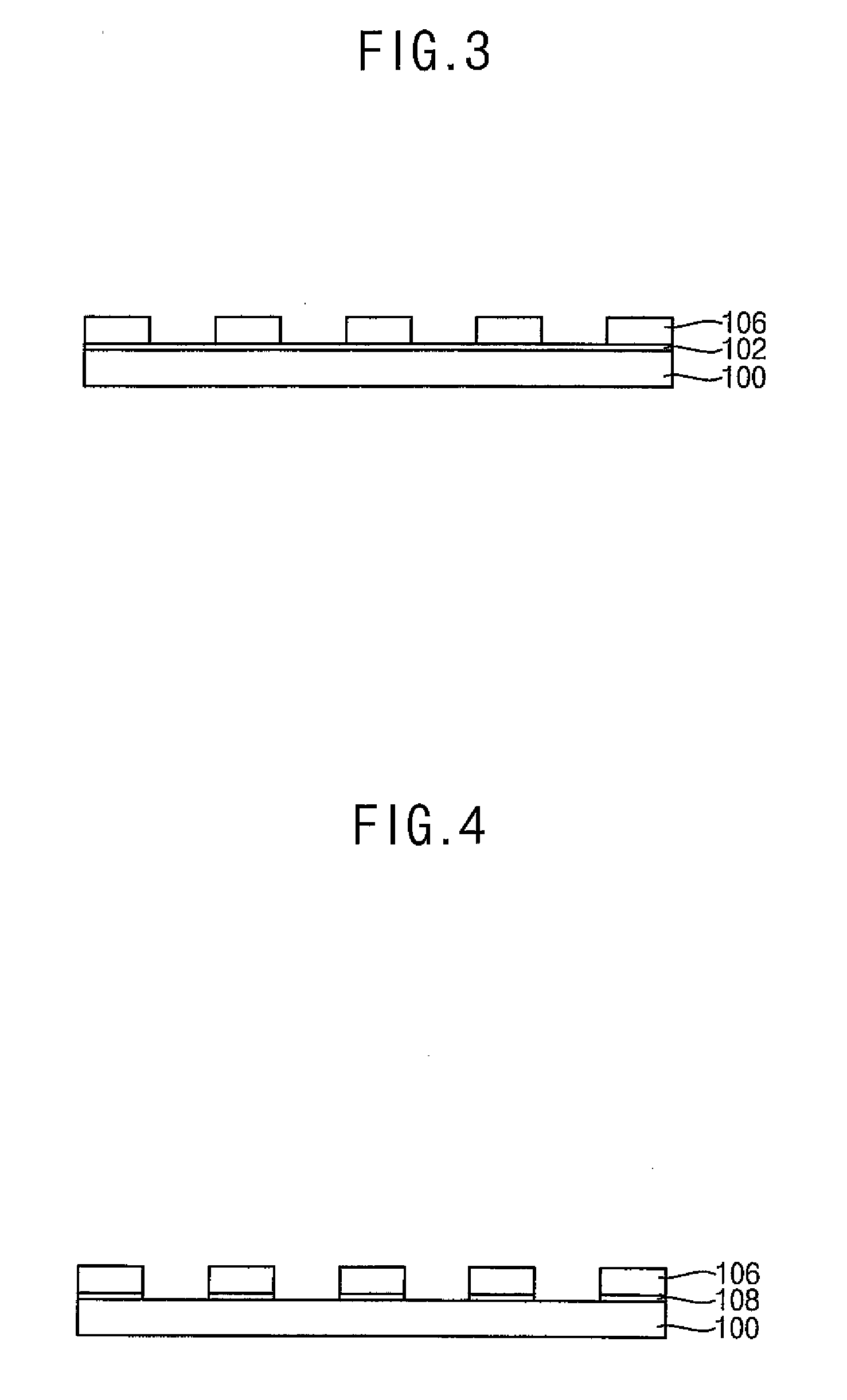Inclusion complex, photoresist composition having the inclusion complex and method of forming a pattern using the photoresist composition
a technology of inclusion complex and composition, which is applied in the field of inclusion complex, photoresist composition having the inclusion complex and the method of forming a pattern using the photoresist composition, can solve the problems of deterioration of mechanical properties of polymers, inevitably generated deviation of line width, and large loss of photoresist patterns, etc., and achieves excellent solubility, enhanced solubility, and uniform profile
- Summary
- Abstract
- Description
- Claims
- Application Information
AI Technical Summary
Benefits of technology
Problems solved by technology
Method used
Image
Examples
example 1
Synthesis of an Inclusion Complex
[0070] About 14.8 g, i.e., 0.013 moles, of β-cyclodextrin and an excess of 1-adamantanecarboxylic acid were dissolved in about 800 mL of water, and then the solution was stirred at a temperature of about 60° C. for about twenty-four hours. Thereafter, water was evaporated from the solution and a solid material was obtained. The obtained solid material was washed with chloroform to remove residue of the 1-adamantanecrboxylic acid. After the solid material was dried at a temperature of about 50° C. under a vacuum condition for twelve hours, a first product was obtained. The first product, i.e., a white solid material, was β-cyclodextrin, including 1-adamantanecarboxylic acid in its cavity.
[0071] About 13.15 g, i.e., 0.010 moles, of the first product and 4-(dimethylamino)pyridine were dissolved in about 20 mL of N,N-dimetylacetamide in an ice bath. About 17.46 g, i.e., 18.28 mL or 0.080 moles, of di-tert-butyl dicarbonate were slowly added to the solu...
example 2
Preparation of a Photoresist Composition
[0076] Preparation of a photoresist composition was performed in a laboratory in which a far ultraviolet ray was blocked. About 111 parts by weight of the inclusion complex obtained in Example 1 and about 20 parts by weight of triphenylsulfonium triflate used as a photoacid generator were dissolved in about 887 parts by weight of propyleneglycol monomethyl ether acetate. The solution was then filtered using a membrane filter having a thickness of about 0.2 μm. As a result, a photoresist composition was obtained.
PUM
| Property | Measurement | Unit |
|---|---|---|
| Temperature | aaaaa | aaaaa |
| Temperature | aaaaa | aaaaa |
| Fraction | aaaaa | aaaaa |
Abstract
Description
Claims
Application Information
 Login to View More
Login to View More - R&D
- Intellectual Property
- Life Sciences
- Materials
- Tech Scout
- Unparalleled Data Quality
- Higher Quality Content
- 60% Fewer Hallucinations
Browse by: Latest US Patents, China's latest patents, Technical Efficacy Thesaurus, Application Domain, Technology Topic, Popular Technical Reports.
© 2025 PatSnap. All rights reserved.Legal|Privacy policy|Modern Slavery Act Transparency Statement|Sitemap|About US| Contact US: help@patsnap.com



